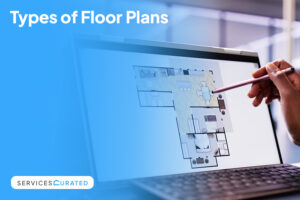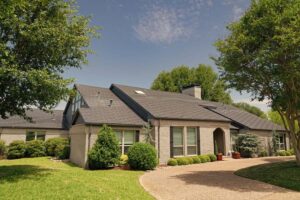Creating your dream home requires a team to realize your unique vision. Unlike production builders who offer standardized designs, custom home builders provide personalized solutions tailored to your needs and preferences.
These experts work closely with homeowners, businesses, and individuals to design and construct one-of-a-kind dwellings that reflect tastes and functional requirements. This sets them apart from mass-produced, cookie-cutter houses.
Building a custom home is crucial for those seeking a living space that embodies their vision. By opting for a custom-built home, you can gain freedom in design choices.
You can select every aspect of their residence, from the overall architectural style to the smallest interior details. This level of customization ensures the home meets practical needs while serving as a personal sanctuary that reflects your style.
You can create a unique, high-quality living space that reflects individuality and meets your family’s needs. Discover how working with home builders can turn your dream home into a reality!
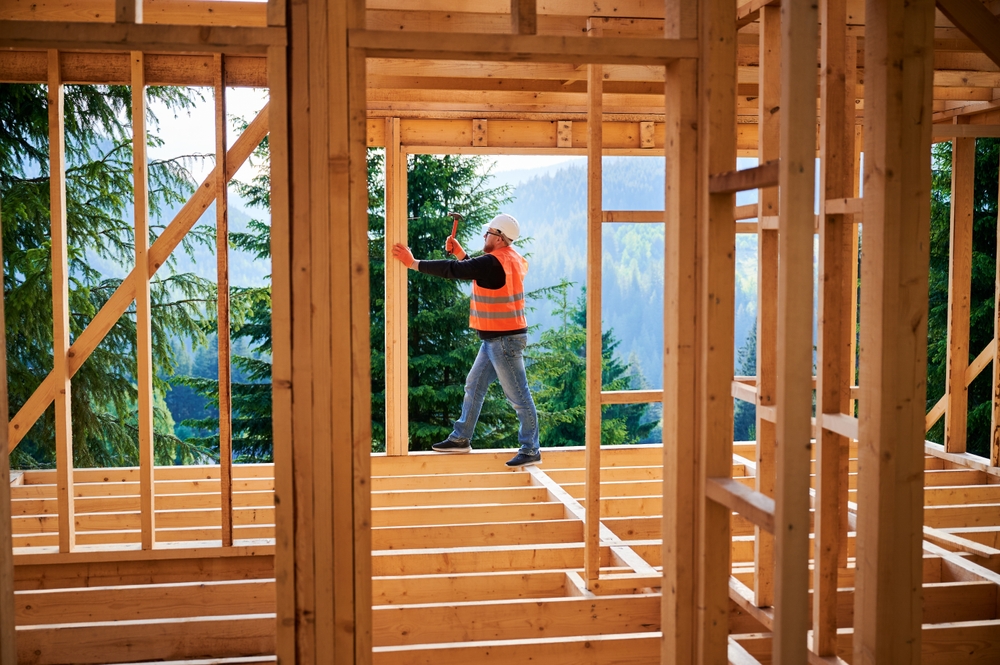
Reasons to Choose Custom Home Builders
Tailored to your needs
Custom home builders excel at creating spaces that cater to your specific requirements. They listen to your preferences and incorporate them into the design. Whether you need a home office, a gourmet kitchen, or accessible features, they can make it happen. From selecting materials to finalizing layouts, your lifestyle and preferences guide every decision in the building process. They ensure that every detail, no matter how small, aligns with your vision for the perfect home.
Quality assurance
High-quality materials and construction are hallmarks of custom-built homes. Builders select premium materials suited to your budget and preferences. They employ skilled professionals to ensure superior quality.
Regular quality checks throughout the construction process uphold rigorous standards, resulting in a durable, well-constructed home designed to stand the test of time. Additionally, custom homes often feature enhanced energy efficiency, making them more environmentally friendly and cost-effective over the long term.
Unique design
Your custom home will be unique as architects and designers collaborate closely with you to achieve a distinctive appearance. You may fully control the architectural style, layout, and interior design, ensuring every detail reflects your taste and personality. This personalized approach results in a home that embodies your vision and aligns seamlessly with your lifestyle.
Energy efficiency
Custom builders can incorporate the latest energy-efficient technologies. They can design your home to maximize natural light and ventilation. High-quality insulation, energy-efficient appliances, and smart home systems can be seamlessly integrated.
These features not only reduce your carbon footprint but also lead to significant long-term savings on utility bills. Moreover, these innovative solutions might contribute to a healthier and more comfortable living environment.
Planning Your Custom Home
Setting a budget
Establishing a realistic budget is crucial for the success of your custom home project. Start by considering all aspects, including land costs, construction, materials, and professional fees. It’s also important to set aside funds for unexpected expenses and potential upgrades.
Additionally, factor in long-term costs such as maintenance, energy bills, and property taxes. A well-planned budget ensures that your dream home stays financially feasible throughout the building process and helps manage expenses long after completion.
Defining your needs and wants
Carefully assess your current and future lifestyle needs. Consider factors like family size, work requirements, and hobbies. Also, distinguish between essential features and desirable extras to prioritize effectively.
Think about how you use your current living space and what improvements you’d like to see. This reflection will help you communicate your vision clearly to your design and construction team.
Yet, don’t forget to consider long-term adaptability in your home design. Anticipate potential changes in your life circumstances and how your home might need to evolve to accommodate them.
Creating a wish list
Compile a comprehensive list of features and elements you want in your new home. Include everything from architectural style to specific room layouts and finishes. Be as detailed as possible to guide your design team effectively.
And prioritize your wish list items, distinguishing between must-haves and nice-to-haves. This will help you make informed decisions if budget constraints require compromises later in the process.
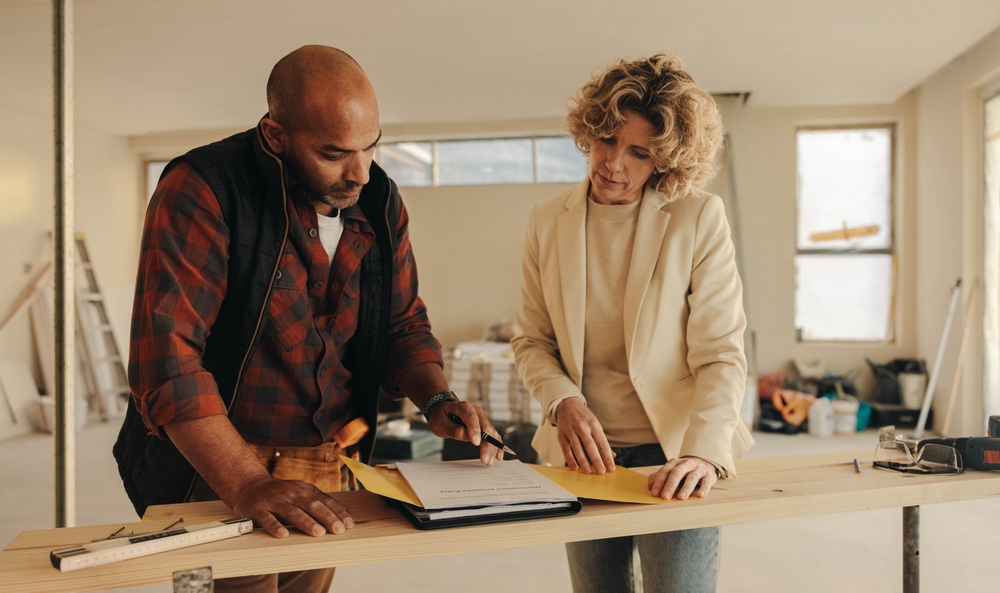
Researching styles and trends
To refine your preferences, start by exploring various architectural styles and design trends. Gather inspiration from magazines, websites, and social media platforms. Visiting open houses and home shows can also provide valuable insights, allowing you to experience different designs firsthand.
You should consider which styles resonate with your taste, lifestyle, and the local environment. Plus, balance current trends with timeless elements to ensure your home’s design remains appealing and relevant for years.
Consulting with professionals
Engage with architects and builders early in the planning process. Their expertise can help refine your ideas and identify potential challenges or opportunities. They can also provide valuable insights on costs, timelines, and feasibility.
We advise you to choose professionals who understand your vision and communicate well. A strong working relationship with your design and construction team is crucial for a successful custom home project.
Design Considerations
Layout options
Carefully plan your floor layout to maximize space and functionality. You should opt for open-plan designs in communal areas while creating distinct zones for privacy.
In addition, ensure room sizes accommodate your furniture and lifestyle needs, and consider traffic flow and connections between spaces. A thoughtfully designed layout enhances comfort and efficiency while ample storage solutions further boost your home’s functionality.
Choosing the right materials
Select materials that balance aesthetics, durability, and sustainability. Although high-quality materials may cost more upfront, they often prove more cost-effective in the long run due to their longevity and lower maintenance needs.
We recommend considering eco-friendly options like recycled materials or sustainably sourced wood. These choices can reduce your environmental impact and may offer unique design elements. You can consult with your builder about local climate considerations to ensure your material choices suit your area.
Selecting appliances and fixtures
You can invest in energy-efficient appliances to reduce long-term operating costs and environmental impact. When selecting major appliances like refrigerators, dishwashers, and HVAC systems, look for ENERGY STAR-certified products.
Furthermore, choose fixtures that complement your overall design while offering functionality. Consider water-saving faucets and showerheads to enhance your home’s efficiency further. Quality fixtures might be a key factor in the look and feel of spaces like kitchens and bathrooms.
Lighting design
Implement a layered lighting strategy that includes task, ambient, and accent lighting. Task lighting illuminates work areas, ambient lighting provides overall illumination, and accent lighting highlights architectural features or artwork.
You can integrate natural light by strategically placing windows and skylights to reduce reliance on artificial lighting during the day. Also, incorporate dimmer switches and smart lighting controls to enhance flexibility and energy efficiency.
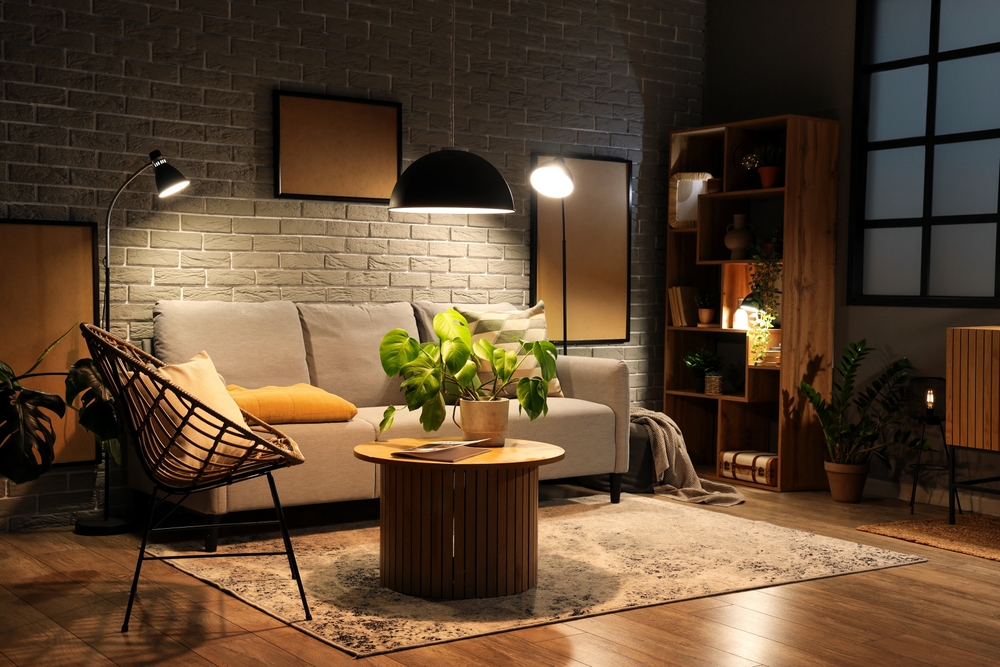
Color schemes and finishes
Select a color palette that reflects your style and sets the desired atmosphere in each room. Consider how colors transition from one space to another to ensure a cohesive look throughout your home.
You may also choose finishes that enhance your color scheme and suit each room’s function. Opt for durable finishes in high-traffic areas to preserve your home’s appearance over time. Remember, elements like flooring, countertops, and cabinetry are crucial in aesthetics and functionality.
Incorporating smart technology
Incorporate smart home features to improve convenience, security, and energy efficiency. Consider climate control, lighting, security, and entertainment systems that can be managed remotely or via voice commands.
Additionally, you should prepare for future technological advancements by installing sufficient wiring and opting for modular systems that can be easily upgraded. While smart technology can significantly enhance your living experience, it’s important to balance it with your budget and avoid overly complex systems that may be challenging to maintain.
Process of Building a Custom Home
Initial consultation and design phase
The process of building your custom home begins with a meeting with an architect. During this initial consultation, you’ll share your ideas, and the architect might create preliminary sketches.
As you review these sketches together, the designs will evolve into detailed plans that include exact room layouts and exterior views. You will have the opportunity to make adjustments until the design meets your satisfaction.
Then, you’ll select materials and finishes, such as flooring, countertops, and paint colors. The architect will assist in choosing items that align with your style, ensuring a cohesive and harmonious look throughout your new home.
Budgeting and planning
With your design ready, it’s time to plan the budget and timeline. You’ll work with your architect and a contractor to create a detailed budget covering all aspects of the build, which will be updated as the project progresses.
A realistic timeline also outlines each construction phase and allows for possible delays. Before construction can start, you’ll need to get the right permits. Your contractor usually handles this process, which can take several weeks.
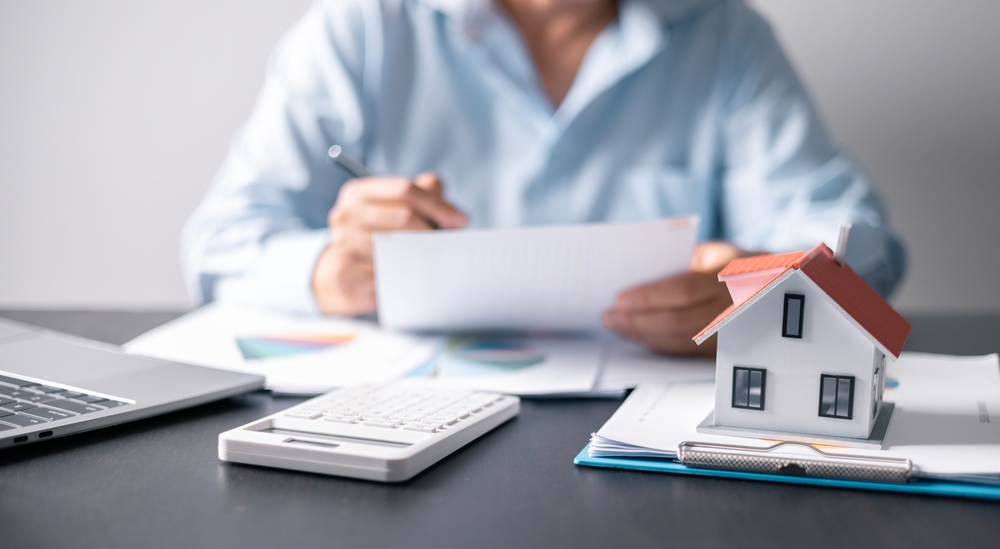
Site selection and preparation
You must choose the right location for your home, which involves evaluating factors such as the neighborhood, schools, and the lot’s features. Once a site is selected, professionals will conduct a land survey and soil testing.
The data informs the optimal placement and design of your home. Subsequently, the land is cleared and leveled to create a suitable foundation for construction while preserving any desirable natural features.
Foundation and framing
The construction process begins with laying the foundation, which provides a stable base for your home. The type of foundation used depends on soil conditions and climate.
Once the foundation is complete, framing starts, creating the skeletal structure of your house. This involves building the walls, floors, and roof structures to establish the basic shape of your home. Finally, the roof is installed, and exterior wall coverings are added to protect the structure from the elements.
Electrical and plumbing work
With the frame in place, electricians and plumbers commence their work. They install wiring for outlets, switches, light fixtures, and pipes for water and drainage. At this stage, the heating, ventilation, and air conditioning (HVAC) systems are also installed.
All these systems must comply with local building codes and pass inspections to ensure safety and efficiency. Once approved, the home begins to shape as walls are insulated and drywall is hung.
Installation of new fixtures and materials
The interior of your home begins to take shape insulation is added to the walls and attic, followed by drywall to create interior walls and ceilings. Various types of flooring are installed throughout the house.
Cabinets and countertops are also installed in the kitchen and bathrooms, custom-made to fit your space perfectly. As these elements come together, the overall design begins to reflect your personal style and preferences.
Painting and finishing touches
It’s time for paint and finishing touches with the major elements in place. The interior walls are painted in your chosen colors. Outside, exterior finishes like brick or siding are applied, and landscaping work begins.
Inside, light fixtures, plumbing fixtures, and hardware are installed, and appliances are delivered and set up. These final details bring your design to life and make the house feel like a home.
Final inspection and walkthrough
As construction wraps up, official inspections ensure everything meets building codes. You and the builder will do a detailed walkthrough, creating a list of any final adjustments needed. Once these are addressed and you’re satisfied, you’ll sign the final paperwork and receive the keys to your new custom home.
Now, you can move in and enjoy the space you’ve carefully designed and built. It’s time to make new memories in a home that truly reflects your vision and lifestyle.
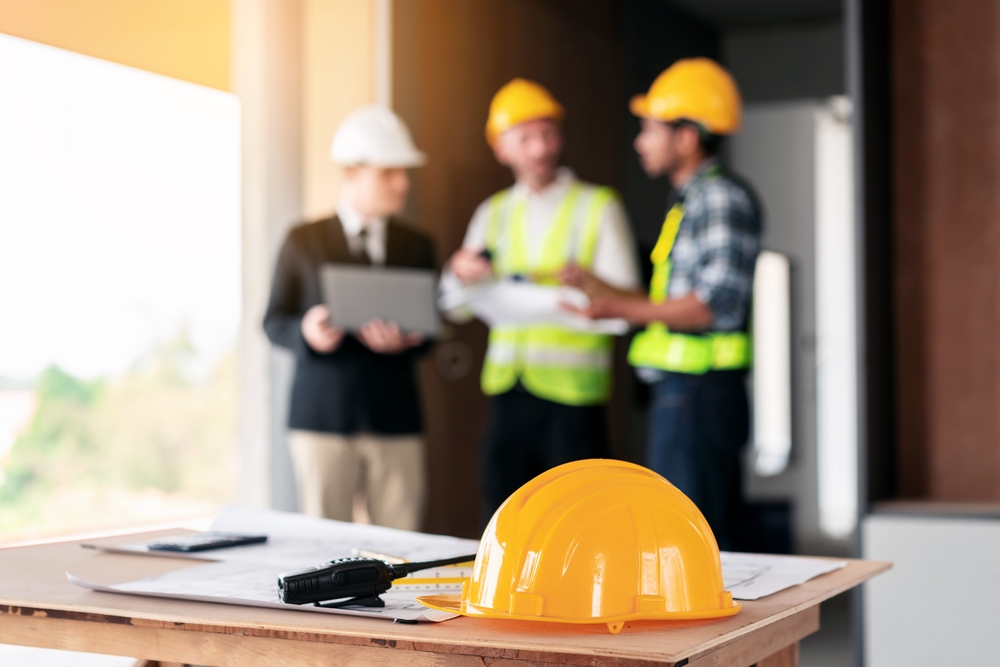
Choosing a Custom Home Builder
Factors to consider
Selecting the right custom home builder is crucial for turning your dream home into reality. Due to this, several factors come into play when making this important decision. Here are the most notable ones:
Licensing and certification
First, verify the builder’s licensing and certification. Proper credentials ensure the builder meets industry standards and indicates a commitment to professionalism and ongoing education.
Don’t hesitate to ask for proof of licensing and certifications. Reputable builders will gladly provide this information. Check with local authorities to confirm the validity of these credentials.
Experience and portfolio
Review the builder’s experience and portfolio. Look for a track record of successful projects similar to your vision. A diverse portfolio showcases versatility and skill.
If possible, request to see completed projects in person. This allows you to assess the quality firsthand and envision how your home might look.
Response time and availability
Consider the builder’s response time and availability. Prompt communication is key to a smooth building process. It reflects the builder’s dedication to client satisfaction.
You should test their responsiveness during the initial inquiry phase. If they’re slow to respond now, it might indicate future communication issues. Discuss their typical response times for different types of queries or concerns.
Reviews and testimonials
Read reviews and testimonials from previous clients. These provide valuable insights into the builder’s reliability and quality of work. Pay attention to both positive and negative feedback.
Additionally, do not rely exclusively on testimonials provided by the builder. Instead, seek independent reviews from various platforms and, if possible, speak directly with past clients to learn about their experiences.
Insurance Coverage
Ensure the builder has adequate insurance coverage to protect you from potential liabilities during construction. Request proof of both general liability and workers’ compensation insurance.
Besides, discuss the specifics of their coverage to understand what it means for you as the homeowner. However, be cautious if a builder is hesitant to provide this information.
Technology and equipment
Inquire about the technology and equipment used. Modern tools can improve efficiency and precision. They often result in better-quality construction and faster completion times.
Ask how their use of technology benefits you as the client. This might include 3D modeling for better visualization or advanced project management software for improved communication.
Questions to ask potential builders
When interviewing builders, it is essential to prepare a comprehensive list of questions. Start by asking about their project management approach and their relationships with subcontractors. Discuss their warranty offerings and request details on their typical timeline for similar projects.
Also, inquire about how they handle changes or unexpected issues during construction. Don’t hesitate to ask challenging questions—an experienced builder will value your diligence. By carefully considering these factors and asking the right questions, you will be well-positioned to select a custom home builder who can bring your vision to life.
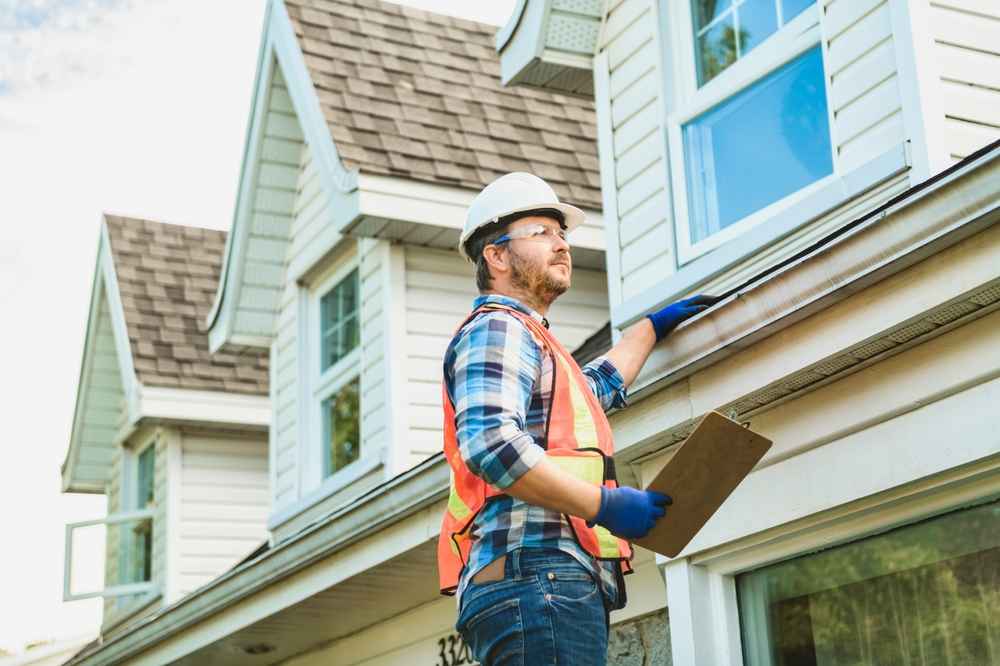
DIY vs. Professional Custom Home Building
When DIY might be feasible
Home building often involves a mix of professional and DIY tasks. Small projects like painting rooms, gardening, or installing new door handles allow you to add personal touches to your home.
These affordable DIY efforts enhance your space. They also offer a chance to learn new skills and save money.
The DIY process is enjoyable and might also save money. Plus, it may give you a sense of accomplishment and ownership over your home.
Benefits of hiring professionals
While DIY is great for small tasks, large home-building projects require professionals. Expert builders ensure safety, adhere to regulations, and efficiently solve problems, preventing costly mistakes.
They use quality tools, source materials cost-effectively, and complete work accurately and swiftly, ultimately saving you time and money. Hiring professionals means a well-built, durable home with less stress for you.
Potential pitfalls of DIY efforts
Building a house on your own might lead to significant issues, including safety hazards and potential construction errors. Potential construction errors might also compromise your home’s integrity.
If mistakes arise, DIY projects often result in costly repairs, and the time and money spent on tools and materials can exceed your budget. The process can be frustrating and disruptive, making professional help a more cost-effective and reliable option in the long run.
Cost Considerations and Budgeting
Breaking down costs
When planning a renovation, it’s crucial to account for all potential expenses to ensure your budget covers the entire project. Material costs can vary significantly based on type and quality; for instance, high-end countertops or flooring will cost more than standard options, so it’s wise to compare prices from different suppliers.
Labor expenses are another major factor. Skilled professionals like electricians and plumbers typically charge higher rates, with electricians costing between $75 and $150 per hour and general contractors charging 10% to 20% of the total project cost.
Additionally, permit fees, ranging from $200 to $500 depending on your location and project type, should be factored into your budget. Don’t overlook inspection costs, which may be required for structural, electrical, or plumbing work, typically ranging from $150 to $400 per visit.
Tips for staying within budget
To control costs effectively, prioritize essential items and focus on quality rather than quantity while remaining realistic about your budget. While undertaking DIY tasks, such as painting, can be a cost-saving measure, it’s best to leave complex jobs to professionals to avoid expensive errors.
Compare material prices, seek out sales, and negotiate for better deals. Also, consider affordable alternatives and reuse items to save money and enhance character. Thoughtful planning and strategic purchasing can substantially reduce overall expenses.

Financing options and incentives
You can consider home equity loans for renovations. These loans provide lower interest rates secured by your property, making them ideal for large projects.
However, they can be risky if payments are not maintained. Government programs might also provide tax credits, rebates, or special loans for energy-efficient upgrades.
Personal loans, which do not require collateral, offer interest rates based on credit scores. While credit cards generally have high interest rates and should be used as a last resort, they may be a viable option if they offer short-term, no-interest promotions.
Contingency planning for unexpected expenses
Always allocate an additional 10-20% of your budget for unforeseen expenses, reserving it strictly for emergencies. Older homes and unpredictable plumbing or electrical work can present hidden issues, making thorough inspections essential.
Remain flexible with your plans by having backup options for materials or designs. Also, consider dividing your project into stages to manage costs and make adjustments as needed.
Maximizing Space and Storage
Clever storage solutions
Clever storage solutions effectively maximize space by utilizing every available area. Built-in storage takes advantage of walls and corners, seamlessly fitting into unconventional spaces and adding value to your home. Custom cabinetry can be tailored to your specific needs, often incorporating features such as pull-out drawers or rotating shelves for improved organization.
In smaller homes where rooms serve multiple functions, multifunctional furniture—such as coffee tables with built-in storage or foldable beds— also proves ideal. These solutions enhance functionality and contribute to a stylish and efficient living environment.
Space-saving designs and layouts
Designing your space effectively can make a big difference. Open floor plans, which combine cooking, dining, and living areas by removing walls, create a more social feel and make small homes less cramped.
In addition, utilizing vertical space with tall bookcases and floor-to-ceiling cabinets draws the eye up, making rooms feel larger. Minimalist design, focusing on essential items and simple furniture with clean lines, creates a calm and open atmosphere.
Utilizing every inch of space efficiently
To truly maximize your space, it’s essential to use every inch wisely. Often, the area under the stairs is overlooked, but it can be transformed into valuable storage with the addition of drawers, cabinets, or even a compact office.
Corners, while challenging, can also be optimized with solutions such as Lazy Susans in kitchen cabinets and corner shelving units. Further, consider the space above doors and ceilings—shelves or hooks placed over doors are ideal for small items. In contrast, ceiling racks in garages or basements can store seasonal items, keeping the floor clutter-free.
Sustainable and Eco-Friendly Building
Choosing sustainable materials
Building green homes benefits the planet and your wallet. To achieve visual appeal and eco-friendliness, start by selecting sustainable materials such as reclaimed wood.
Recycled metal is ideal for roofs and walls due to its lower energy production requirements. For flooring, consider bamboo or cork, which grow quickly and are easy to replace. When insulating, opt for eco-friendly options such as recycled denim or paper, which are effective and safe to handle.
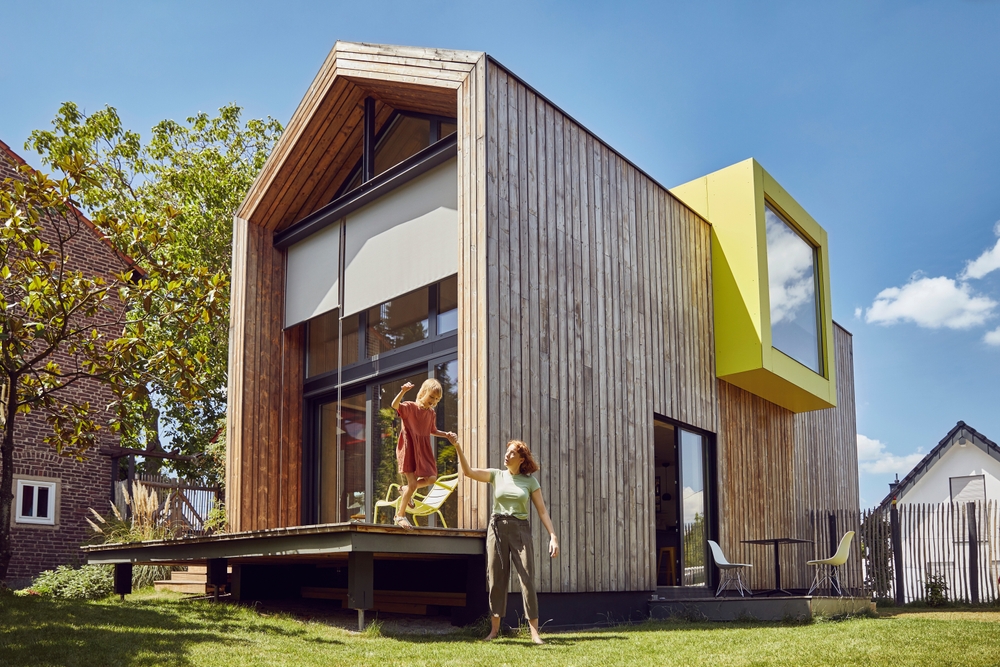
Energy-efficient appliances and lighting
Choose energy-efficient appliances and lighting. As mentioned, look for the ENERGY STAR label on refrigerators and washing machines, as they consume less power and water. Opt for LED lights, which last longer and are more energy-efficient.
To save even more energy, consider installing a solar water heater, which uses sunlight to warm your water. Smart thermostats can optimize your heating and cooling, further reducing energy consumption.
Waste reduction and recycling during the build
Minimizing waste during construction is crucial. On-site, sort materials by placing wood, metal, and plastic into separate bins to facilitate recycling. When renovating an older house, dismantle it carefully to identify reusable materials.
If you have surplus materials, consider donating them to organizations like Habitat for Humanity, which can put them to good use. You can also use digital plans and checklists to reduce paper waste and streamline the building process.
Benefits of green building
Green building offers numerous benefits. It reduces the cost of running your home, leading to lower expenses for power and water. The indoor air quality is improved, which might enhance your health by reducing sneezing and promoting better breathing.
Furthermore, green homes are environmentally friendly, using less energy and water, and some even generate their own power. By choosing green building, you contribute to environmental protection and conserve resources for the future.
Common Challenges in Custom Home Building
Building a custom home is exciting, but it also comes with challenges. So, we included some common issues and how to handle them.
Dealing with delays and unexpected issues
One significant challenge is dealing with delays. Weather can be a problem, as rain or snow can halt outdoor work.
Materials may be hard to find or become more expensive, which can slow progress. Obtaining permits and passing inspections can also take longer than expected.
That said, builders need to plan for these issues and have backup plans ready to manage potential setbacks. Effective communication with all parties involved can further help to address and mitigate delays.
Managing the building process
Coordinating workers and quality checks in home-building projects helps avoid mistakes and maintain schedules. However, maintaining the project within budget is challenging, especially with potential changes and unexpected issues.
Builders must communicate, offer updates, and manage changes to avoid delays and extra costs. A well-defined contract, regular meetings, and stringent safety measures can help resolve disputes, prevent misunderstandings, and ensure site security.
Trends in Custom Home Building
Custom home building is always changing. New ideas and technologies make homes better and more exciting. We included some of the popular trends below:
Current design trends
People today love open, connected spaces in their homes, with kitchens, dining rooms, and living rooms often flowing together to create a brighter, more spacious feel. Large doors that open to patios or gardens and features like outdoor kitchens or living rooms bring nature inside.
Eco-friendly designs are also popular, with many custom homes using green materials and energy-saving technologies to enhance sustainability. This trend reflects a growing desire for beautiful and environmentally responsible homes.
Innovations in home technology
Smart homes are increasingly becoming the standard, offering the ability to control lighting, temperature, and security through voice commands or smartphone apps. These systems not only streamline daily living but also contribute to energy efficiency. Plus, some smart homes can detect issues such as water leaks.
Home offices are also advancing, with improvements like high-speed internet and effective soundproofing, ensuring a comfortable remote work environment. The integration of smart home technologies enhances convenience and boosts the overall value of your home.
Popular materials and finishes
Natural materials like wood and stone are popular. They make your home feel warm and connected to nature. Some people use reclaimed wood to give their homes character.
Mixing different metal finishes is also trendy; you might see gold and silver together in one room, creating an interesting and personalized look. Bold colors and patterns are making a comeback, with bright walls or fun tiles adding a unique touch to any room. This blend of natural elements and vibrant designs creates a harmonious and lively living space.
Energy-efficient design
Many custom homes prioritize energy efficiency. Some are designed as passive houses, utilizing specific architectural features to maintain comfortable temperatures without relying heavily on heating or cooling systems. Others generate their own energy through solar panels, potentially eliminating electricity costs.
Modern heating and cooling systems are also becoming increasingly advanced; they can adjust temperatures in different rooms and even learn your schedule to optimize energy use. These trends highlight how custom homes have evolved to be smarter, more comfortable, and environmentally friendly, aligning with contemporary desires for dream homes.
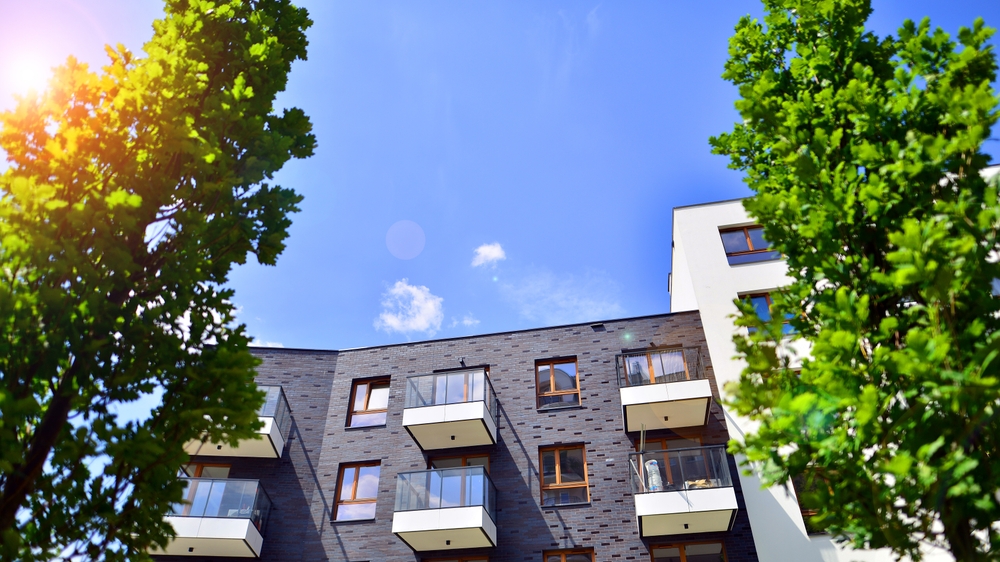
Frequently Asked Questions
How long does it typically take to build a custom home?
The timeline for building a custom home can vary significantly depending on factors such as the size and complexity of the design, local regulations, and weather conditions. On average, you can expect the process to take anywhere from 10 to 16 months.
This includes the initial design phase, obtaining permits, and the actual construction. However, larger or more intricate projects may take up to 24 months or more. It’s important to discuss the expected timeline with your chosen builder and factor in potential delays.
Is building a custom home more expensive than buying an existing one?
Generally, building a custom home is more expensive than purchasing an existing home. Custom homes allow for personalized designs, high-quality materials, and specific features that cater to your unique needs and preferences. These factors often result in higher costs.
However, the long-term value, energy efficiency, and satisfaction of having a home that perfectly suits your lifestyle can offset the initial higher investment. It’s crucial to establish a clear budget early in the process and work closely with your builder to manage costs effectively.
How much input do I have in my custom home’s design and construction process?
You have a significant amount of input in both the design and construction of your custom home. You’ll work closely with the architect and builder to create a design that meets your vision, needs, and budget. During construction, you’ll decide everything from layout and materials to finishes and fixtures.
However, it’s important to balance your desires with the expertise of your professionals. They can provide valuable insights on practicality, building codes, and cost-effective solutions. Good communication throughout the process ensures your home reflects your vision while adhering to necessary standards and regulations.
Is it true that custom homes always go over budget?
This is a common misconception. While it’s true that custom home projects can sometimes exceed initial budgets, this isn’t inevitable.
Proper planning, clear communication, and working with an experienced builder can help keep costs under control. Many budget overruns occur due to changes in design or materials during the building process.
You can significantly reduce the risk of unexpected costs by finalizing as many decisions as possible before construction begins and setting aside a contingency fund (typically 10-20% of the total budget). A reputable builder will provide detailed estimates and keep you informed about expenses throughout the project, helping you stay on budget.
Do I need to have a fully developed design before approaching a custom home builder?
Many custom home builders prefer to be involved early in the design process. While it’s helpful to have a general idea of what you want, you don’t need a complete design before contacting a builder.
Many builders work closely with architects or have in-house design teams. They can provide valuable input on the feasibility, cost-effectiveness, and practical aspects of your ideas.
Involving a builder early can lead to a more efficient design process, better cost estimates, and potentially significant savings. They can also suggest innovative solutions or alternatives you might not have considered.
Locations
California
- Los Angeles
- San Diego
- San Jose
- San Francisco
- Fresno
- Sacramento
- Long Beach
- Oakland
- Bakersfield
- Anaheim
- Santa Ana
- Riverside
- Stockton
- Chula Vista
- Irvine
- Fremont
- San Bernardino
- Modesto
- Fontana
- Oxnard
- Moreno Valley
- Glendale
- Huntington Beach
- Santa Clarita
- Oceanside
- Garden Grove
- Rancho Cucamonga
- Santa Rosa
- Ontario
- Elk Grove
- Corona
- Lancaster
- Palmdale
- Hayward
- Salinas
- Pomona
- Sunnyvale
- Escondido
- Torrance
- Pasadena
- Fullerton
- Orange
- Roseville
- Visalia
- Thousand Oaks
- Concord
- Simi Valley
- Santa Clara
- Victorville
- Vallejo
- Berkeley
- El Monte
- Downey
- Costa Mesa
- Inglewood
- Carlsbad
- Fairfield
- Ventura
- Temecula
- Antioch
- Richmond
- West Covina
- Murrieta
- Norwalk
- Daly City
- Burbank
- Santa Maria
- El Cajon
- San Mateo
- Rialto
- Clovis
- Jurupa Valley
- Compton
- Vista
- Mission Viejo
- South Gate
- Vacaville
- Carson
- Hesperia
- Santa Monica
- Westminster
- Redding
- Santa Barbara
- Chico
- Newport Beach
- San Leandro
- Indio
- Tracy
- Livermore
- Baldwin Park
- Merced
- Chino
- Redwood City
- Lake Forest
- Napa
- Tustin
- Buena Park
- Mountain View
- Lakewood
- San Marcos
Texas
- Houston
- San Antonio
- Dallas
- Austin
- Fort Worth
- El Paso
- Arlington
- Corpus Christi
- Plano
- Laredo
- Lubbock
- Garland
- Irving
- Amarillo
- Grand Prairie
- Brownsville
- McKinney
- Frisco
- Pasadena
- Mesquite
- Killeen
- Carrollton
- Midland
- Waco
- Denton
- Abilene
- Odessa
- Beaumont
- Round Rock
- Richardson
- Pearland
- College Station
- Tyler
- League City
- Wichita Falls
- Allen
- San Angelo
- Edinburg
- Sugar Land
- Mission
- Conroe
- Bryan
- New Braunfels
- Pharr
Florida
- Jacksonville
- Miami
- Tampa
- Orlando
- St. Petersburg
- Hialeah
- Tallahassee
- Port St. Lucie
- Cape Coral
- Fort Lauderdale
- Pembroke Pines
- Hollywood
- Miramar
- Gainesville
- Coral Springs
- Clearwater
- Miami Gardens
- Palm Bay
- Pompano Beach
- West Palm Beach
- Lakeland
- Davie
- Miami Beach
- Plantation
- Sunrise
- Boca Raton
- Deltona
- Palm Coast
- Largo
- Melbourne
New York
- New York City
- Buffalo
- Rochester
- Yonkers
- Syracuse
- Albany
- New Rochelle
- Mount Vernon
- Schenectady
- Utica
- White Plains
- Hempstead
- Troy
- Niagara Falls
- Binghamton
- Freeport
- Valley Stream
- Long Beach
- Rome
- North Tonawanda
Pennsylvania
- Philadelphia
- Pittsburgh
- Allentown
- Erie
- Reading
- Scranton
- Bethlehem
- Lancaster
- Harrisburg
- Altoona
Illionois
- Chicago
- Aurora
- Rockford
- Joliet
- Naperville
- Springfield
- Peoria
- Elgin
- Waukegan
- Champaign
- Bloomington
- Decatur
- Evanston
- Des Plaines
- Berwyn
- Wheaton
- Belleville
Ohio
- Columbus
- Cleveland
- Cincinnati
- Toledo
- Akron
- Dayton
Georgia
- Atlanta
- Augusta
- Columbus
- Savannah
- Athens
North Carolina
- Charlotte
- Raleigh
- Greensboro
- Durham
- Winston-Salem
- Fayetteville
- Cary
- Wilmington
- High Point
Michigan
- Detroit
- Grand Rapids
- Warren
- Sterling Heights
- Ann Arbor
- Lansing
- Flint
- Dearborn
- Livonia
- Troy
New Jersey
- Newark
- Jersey City
- Paterson
- Elizabeth
- Edison
- Woodbridge
- Lakewood
- Toms River
- Hamilton
- Trenton
Virginia
- Virginia Beach
- Norfolk
- Chesapeake
- Richmond
- Newport News
- Alexandria
- Hampton
- Roanoke
- Portsmouth
- Suffolk
Washington
- Seattle
- Spokane
- Tacoma
- Vancouver
- Bellevue
- Kent
- Everett
- Renton
- Federal Way
- Yakima
Massachusetts
- Boston
- Worcester
- Springfield
- Lowell
- Cambridge
- New Bedford
- Brockton
- Quincy
- Lynn
- Fall River
Arizona
- Phoenix
- Tucson
- Mesa
- Chandler
- Glendale
- Scottsdale
- Gilbert
- Tempe
- Peoria
- Surprise
Tennessee
- Nashville
- Memphis
- Knoxville
- Chattanooga
- Clarksville
- Murfreesboro
- Franklin
- Jackson
- Johnson City
- Bartlett
Indiana
- Indianapolis
- Fort Wayne
- Evansville
- South Bend
- Carmel
- Fishers
- Bloomington
- Hammond
- Gary
- Lafayette
Missouri
- Kansas City
- St. Louis
- Springfield
- Columbia
- Independence
- Lee’s Summit
- O’Fallon
- St. Joseph
- St. Charles
- St. Peters
Maryland
- Baltimore
- Columbia
- Germantown
- Silver Spring
- Waldorf
- Glen Burnie
- Ellicott City
- Frederick
- Dundalk
- Rockville
Wisconsin
- Milwaukee
- Madison
- Green Bay
- Kenosha
- Racine
- Appleton
- Waukesha
- Oshkosh
- Eau Claire
- Janesville
Colorado
- Denver
- Colorado Springs
- Aurora
- Fort Collins
- Lakewood
- Thornton
- Arvada
- Westminster
- Pueblo
- Centennial
Minnesota
- Minneapolis
- St. Paul
- Rochester
- Duluth
- Bloomington
- Brooklyn Park
- Plymouth
- St. Cloud
- Eagan
- Woodbury
South Carolina
- Columbia
- Charleston
- North Charleston
- Mount Pleasant
- Rock Hill
- Greenville
- Summerville
- Sumter
- Goose Creek
- Hilton Head Island
Alabama
- Birmingham
- Montgomery
- Mobile
- Huntsville
- Tuscaloosa
Louisiana
- New Orleans
- Baton Rouge
- Shreveport
- Lafayette
- Lake Charles
Kentucky
- Louisville
- Lexington
- Bowling Green
- Owensboro
- Covington
Oregon
- Portland
- Salem
- Eugene
- Gresham
- Hillsboro
Oklahoma
- Oklahoma City
- Tulsa
- Norman
- Broken Arrow
- Edmond
Connecticut
- Bridgeport
- New Haven
- Stamford
- Hartford
- Waterbury
Iowa
- Des Moines
- Cedar Rapids
- Davenport
- Sioux City
- Iowa City
Mississippi
- Jackson
- Gulfport
- Southaven
- Hattiesburg
- Biloxi
Arkansas
- Little Rock
- Fort Smith
- Fayetteville
- Springdale
- Jonesboro
Utah
- Salt Lake City
- West Valley City
- Provo
- West Jordan
- Orem
Nevada
- Las Vegas
- Henderson
- Reno
- North Las Vegas
- Sparks
Kansas
- Wichita
- Overland Park
- Kansas City
- Olathe
- Topeka
New Mexico
- Albuquerque
- Las Cruces
- Rio Rancho
- Santa Fe
- Roswell
Nebraska
- Omaha
- Lincoln
- Bellevue
- Grand Island
- Kearney
West Virginia
- Charleston
- Huntington
- Parkersburg
- Morgantown
- Wheeling
Idaho
- Boise
- Meridian
- Nampa
- Idaho Falls
- Pocatello
Hawaii
- Honolulu
- Pearl City
- Hilo
- Kailua
- Waipahu
Maine
- Portland
- Lewiston
- Bangor
- South Portland
- Auburn
New Hampshire
- Manchester
- Nashua
- Concord
- Derry
- Dover
Rhode Island
- Providence
- Warwick
- Cranston
- Pawtucket
- East Providence
Montana
- Billings
- Missoula
- Great Falls
- Bozeman
- Butte
Delaware
- Wilmington
- Dover
- Newark
- Middletown
- Smyrna
South Dakota
- Sioux Falls
- Rapid City
- Aberdeen
- Brookings
- Watertown
North Dakota
- Fargo
- Bismarck
- Grand Forks
- Minot
- West Fargo
Alaska
- Anchorage
- Fairbanks
Vermont
- Burlington
- South Burlington
Wyoming
- Cheyenne
- Casper
Recent Blog Posts
Types of Floor Plans
Choosing the right floor plan can be one of the most impactful decisions in designing your home. Visualize walking through…
Types of Interior Design Styles
Interior design is a captivating art form that transforms living spaces into personalized havens, reflecting the unique tastes and lifestyles…
What Are the Parts of a House?
A house is more than just a place to live; it’s a carefully crafted structure where every part has a…
Different Styles of Houses
Homes come in all shapes and sizes, reflecting diverse cultures, climates, and personal preferences worldwide. From towering skyscrapers in bustling…

